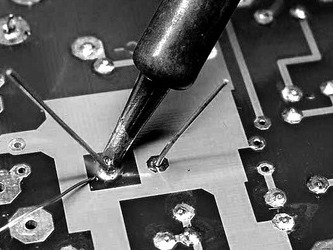
The USA Environmental Protection Agency (EPA) as well the IKP, University of Stuttgart, have performed a life-cycle assessment (LCA) of the environmental impacts of lead-free and tin-lead solder, as used in electronic products.
For bar solders, when only lead-free solders were considered, the tin/copper alternative had the lowest (best) scores.
For paste solders, bismuth/tin/silver had the lowest impact scores among the lead-free alternatives in every category except non-renewable resource consumption.
For both paste and bar solders, all of the lead-free solder alternatives had a lower (better) LCA score in toxicity categories than tin/lead solder. This is primarily due to the toxicity of lead, and the amount of lead that leaches from printed wiring board assemblies.
The Association connecting the electronics industry performed a research on the performance of tin/silver/copper solders (SAC). They found no statistically significant difference with Lead based solder on
• Assembly performance screening to compare alloys
• Down selection of the solder pastes for assembly:
• Assembly of test vehicles using SAC alloys with SnPb eutectic solder as a control
• Baseline metallographic analysis of the assembled test vehicles
• Thermal cycling testing
• Metallographic analysis as a function of thermal cycling
Due to lower cost and equivalent performance, the 96.5/3.0/0.5 SAC alloy be the lead free solder paste of their choice

Comments by our Users
Be the first to write a comment for this item.